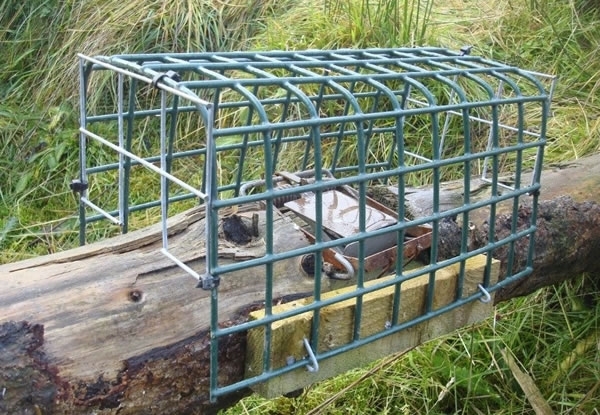By Dr Adam Smith, GWCT Scotland Director
The increasing numbers of people who blog can be very useful in drawing our attention to the way wildlife management is sometimes carried out. A case in point has been recent attention given to ‘rail traps’.
Spring traps (regulated by the Spring Trap Approval Order (Scotland) 2011) are commonly set to take stoats, weasels and rats, to improve the conservation of gamebirds such as red grouse, grey partridge and black grouse, but also other ground nesting birds such as lapwing and curlew (1, 2).
One setting for these spring traps is on a rail (a wooden beam, pole or log) laid across a ditch; this provides a crossing point for these predatory species. To reduce the likelihood of trapping non-target species, such as pine marten, red squirrel (or even birds), the law (as above and the Wildlife & Countryside Act (1981) as amended) requires that precautions to exclude non-target species must be taken.
This involves setting the spring trap in an artificial tunnel on the rail and fitting adequate ‘excluders’ (entrance restrictor) to help minimise the risk of non-target species from entering the trap. Good practice is to construct trap tunnels with solid wood or mesh walls and roof with varying approaches to excluder materials/design.

The habitat location of rail traps is an important factor affecting the species which might be captured. The trap operator should assess this risk carefully as there are some areas where the risk of catching a non-target species is more likely to occur.
Well-located, maintained and suitably excluded rail traps can be an effective part of a game and wildlife conservation management plan. Get it right and these traps are an important addition to protecting species such as black grouse. Get it wrong, as appears may be the case on some moors in Scotland recently, and the hard work of keepers is easily discredited. If in doubt, contact GWCT’s Advisory Service who can help ensure trap users ‘don’t go off the rails’.
GWCT Gamekeeper Membership - Join online today
Pay monthly
Pay annually
References
1. Tapper, S.C., Potts, G.R., & Brockless, M.H. (1996). The effect of an experimental reduction in predation pressure on the breeding success and population density of grey partridges Perdix perdix. Journal of Applied Ecology, 33: 965-978.
2. Tapper, S. Waders on the Fringe. Game & Wildlife Conservation Trust, Burgate.